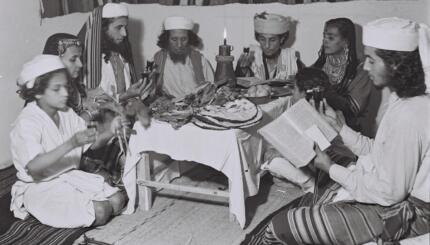Purim is the one day of the year I feel empowered in my community. The rest of the year, services go on regardless of whether I am there or not. But on , I know that in different countries across the world, people are reading from s (Scrolls of Esther) that I have produced with my own two hands.
When is Purim 2017? Click here to find out!
This connection is not coincidental. Women have always been at the very center of what Purim is all about. There have long been prohibitions on women writing or reading . However, Rabbi Joshua ben Levi, a Tanna in the Gemara, argues that women are obligated to read the megillah “for they were present for the miracle” (Megillah 4a). Not only were women present when the Jews were miraculously saved, but Esther was the one who risked her life in order to uncover the plot to kill her people! No subtle interpretations are needed. The megillah itself reports that Esther was an active agent in the creation of written history: “Then Esther the queen, the daughter of Avihayil, and Mordekhai the Jew, wrote with all emphasis to confirm this second letter of Purim” (Esther 9:29).
I am not interested in making a halakhic (Jewish legal) argument here. That has already been done. Rather than arguing that women should be brought in from the margins, I want to argue that — for this festival at least — they belong at the very center. It’s not just that women are permitted to participate fully in the mitzvot (commandments) of Purim but that our obligation speaks to the very nature of the megillah and of our history at large. On Purim I hear the words of the megillah, authored by Esther and read by the women of my community from a scroll written by a woman. Some consider a woman’s voice erva (nakedness, immodesty), but on Purim the voices of women throughout the ages ring out in every synagogue.
So what is Purim like for a soferet, a female ritual scribe? We spend all year preparing for Purim. A single megillah contains 16 columns of 21 lines each with a total of 12,111 letters. This takes close to 100 hours of holding a quill and shaping each letter (not to mention hours spent reviewing the halakha, cutting quills, sewing the sheets of parchment together and carefully checking for mistakes). Out of a sea of straight lines and curves emerges a beautiful narrative consisting of 12,111 characters, each with something to say. I have spoken each letter, each word, and just as there is a part of me in the megillah I have created, there is also a part of the megillah inside me. My community needs me.
READ: Women’s Megillah Reading in a Small Town — Some Tips from our Fifth Year
I am not the first soferet and will definitely not be the last. The production of sofrut, scribal work, is a humbling experience. The goal is for my handwriting to look identical to the writing of thousands of anonymous scribes throughout the ages. For some this may sound claustrophobic. But for me it is a chance to show that I am as educated, committed and skillful as any other scribe.
This mindset is not limited to when I sit down to work on a megillah. I was driven to learn sofrut because of the beauty of the craft. But I am compelled to continue because of what being a soferet means: I am constantly aware that my actions (what I eat, how I speak to others) affect my status as a halakhically soferet. This goes beyond having a particular manual skill. In order to be able to write megillahs I must live a life which is imbued with the values of the tradition which I carry.
I bear the tradition of my people, but especially of my matriarchs. One of the earliest complete manuscripts of an illuminated megillah was written by a Venetian woman named Estellina daughter of Menahem in 1564, which is part of the Braginsky Collection of Hebrew Manuscripts and Printed Books, currently housed in the Israel Museum. The discovery of this manuscript inspired me and two friends, Elana Levy and Nechama Zobin, to create an illuminated megillah which we printed and distributed in 2011. Nechama did the sofrut, Elana created the illustrations and I illuminated and compiled the pages.
I see my artwork, both calligraphic and otherwise, as a continuation of a family tradition. My great-grandmother, Esther Blackburn embroidered beautifully ornate covers for the Sefer Torah (Torah scroll) and Tebah (reading table) of her family’s synagogue in London. On Purim, when I hear the opening blessings as the reader begins to chant the megillah, I think of my great-grandmother and I am grateful for my opportunity to use my hands to create something which is valuable to my community. I am grateful to my teachers — those who taught me to read and rishonim (early rabbinic sources) and to the incredible Jen Taylor Friedman who has taught me everything I know about sofrut. We don’t have to look much further than Purim for inspiration: from Esther to Estellina women have always taken active roles in the continuation of our intellectual history and now I can be a part of that too.
Click here to view or order a copy of our megillah.
Check out all of JOFA’s Resources for Purim and Megillah Reading!



